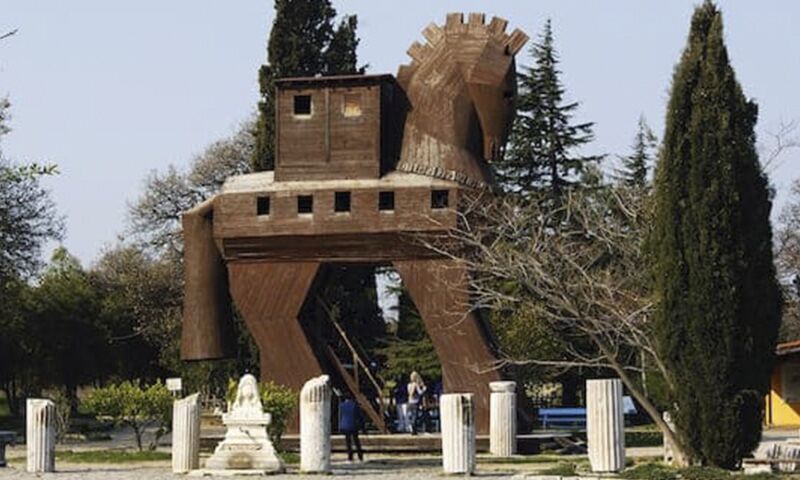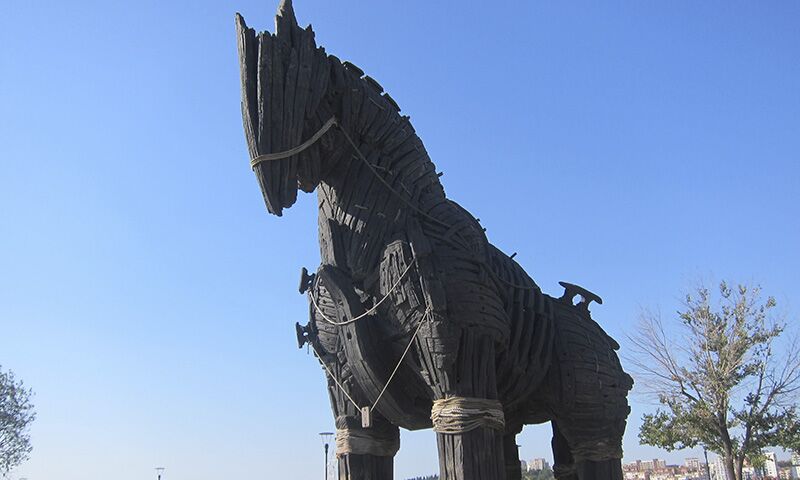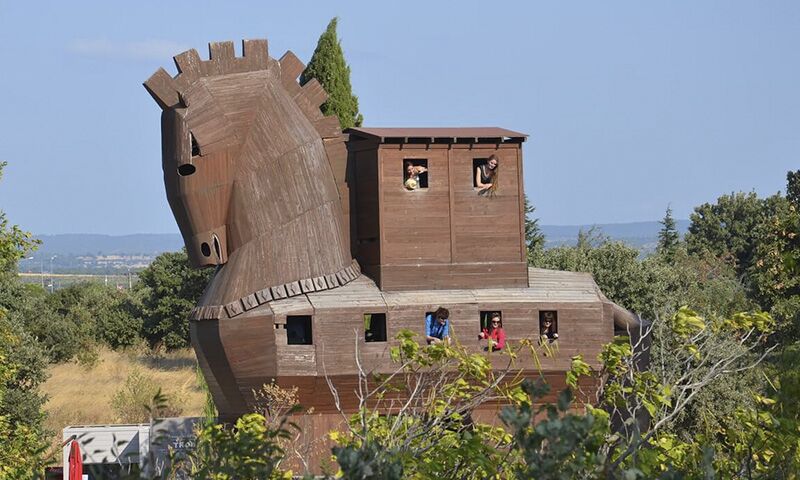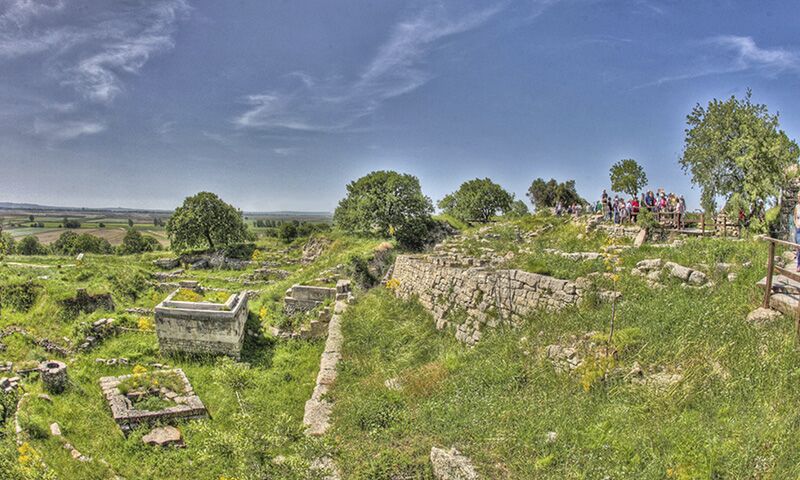Daily Troy Tour
200€
Explore the ruins of Troy, see the Trojan horse and learn about the Greek mythology during Daily Troy Tour from Istanbul.
About Daily Troy Tour
TROY
Departure from Istanbul: Carried out everyday
Brief information on its history
Troy or Ilium is a both historical and legendary city. In Greek, it was called Troia, Ilium or Ilios, and in Turkish Truva. The word Wilusa, according to studies, was the name used in Hittite for the city of Troy. Troy developed by her mythical war. Homer refers to Troy in the Odyssey and The Iliad which are considered two of the oldest epic poems written in the western world, dating back to the eighth century B.C. According to the Greek epic, The Judgment of Paris is the story of a beauty contest between the Greek goddesses Hera, Athena and Aphrodite.
When the goddess of discord and strife, Eris, was not invited to a major wedding, she decided to cause trouble by throwing a golden apple at the crowd. The golden apple was marked with the legend “For the most beautiful” and was immediately claimed by the goddesses Hera, Athena and Aphrodite, which caused a beauty contest. They claimed that the apple was for each one of them and asked Zeus’ opinion. Zeus fearing to enter a dispute chose Paris, the Prince of Troy, to judge the contest.
Each goddess offered a bribe to Paris. Hera offered power, Athena the military victory and Aphrodite, the love of the most beautiful woman in the world. Paris chose Aphrodite. The most beautiful woman was Helena, Queen of Sparta. The Judgment of Paris is the mythical origin of the Trojan War. When Paris abducted Helena, Melenao de Sparta, her husband, summoned the Greeks, they waged war against the Trojans, causing the Trojan War and its consequent destruction. This war was where many of the great heroes in antiquity met, such as Achilles, Hector or Ajax. The poisoned arrows of Prince Philoctetes killed Paris, but his death had no effect on the outcome of the war.
The City of Troy was occupied from the first half of the 3rd millennium B.C. until the 6th century A.C. After the Emperor Constantine had made Christianity as the official religion of the Roman Empire, Emperor Julian the Apostate, a supporter of ancient beliefs, visited the city in 354-355, being able to verify that the tomb of Achilles was still there and that the locals were still offering sacrifices to Athena. However, in 391 pagan rites were banned.
Around the year 500 a great earthquake occurred that caused the definitive collapse of the most emblematic buildings in Troy. It seems that Troy continued to be a populated settlement during the time of the Byzantine Empire, until the 13th century, After the Fall of Constantinople in 1453, the hill on which Troy settled was called Hisarlik, meaning ‘endowed with strength’ in Turkish.
Adventurer Heinrich Schliemann admitted that Homer was an epic poet and not a historian, and that he was able to exaggerate the conflict for the sake of poetic freedom, but not invent it. The scientific community questioned its methods and its results. Shortly after, the archaeologist Dörpfeld argued that Troy VI was a victim of Mycenaean expansionism. Heinrich Schliemann began excavating the ruins of Troy in 1870 in Hisarlik. Frank Calvert had carried out preliminary excavations seven years before Schliemann’s arrival, and suggested that Hisarlik Hill was the site of the mythical city.
In 1873, he discovered a collection of gold objects and jewelry that he called Priam’s Treasure. He had her illegally transferred to Greece and for this, in 1874, he was accused of stealing national property by the Ottoman Empire and later was sentenced to pay a fine. To regain a chance that the Turkish authorities would allow him to dig again in the future, he paid higher compensation and donated some findings to the Istanbul Archaeological Museum. In 1879, convinced by Rudolf Virchow, Schliemann decided to donate the treasure to Germany, where he arrived at the Berlin Arts and Crafts museum until they moved to the new museum of Ethnology.
During the capture of Berlin by the Soviet army at the end of World War II; Priam’s treasure disappeared. Some believed that the gold had been melted or that it was lost forever, until 1993. The treasure was found in the Pushkin Museum in Moscow, where it had been taken in 1945 as loot of war.
With our daily tour that begins first thing in the morning, you will discover the ruins of Troy, which today is an important archaeological site in the northwest of the country, next to the Dardanelles Strait and near the Turkish city Canakkale, crossing the Dardanelles Strait, we will pass through the Galipoli Battlefields that happened after the First World War.
After a full day tour of the ruins of Troy, we return to Istanbul.
COLLECTION DETAILS
We will pick you up first thing in the morning at the hotel. In our Reservation Form, we ask you to include the name of your cruise and the shipping company. It is very important since when we pick you up to start the tour there may be more than one cruise in the same port. Once your reservation is confirmed, we will send you a voucher (service voucher) with all the information of our contacts, such as telephone numbers and e-mail addresses, in case you need to contact us beforehand to update or change any details regarding the collection at your port.
The exact time of the pick up at the port will depend on the time of arrival at the port; therefore, it must be agreed in advance. We will confirm the exact time by email or telephone when you inform us of the arrival time of your cruise.
DURATION of the TOUR
Full Day Tour, Between 10 and 12 Hours.
TOUR PRICE
€ 350




Reviews
There are no reviews yet.